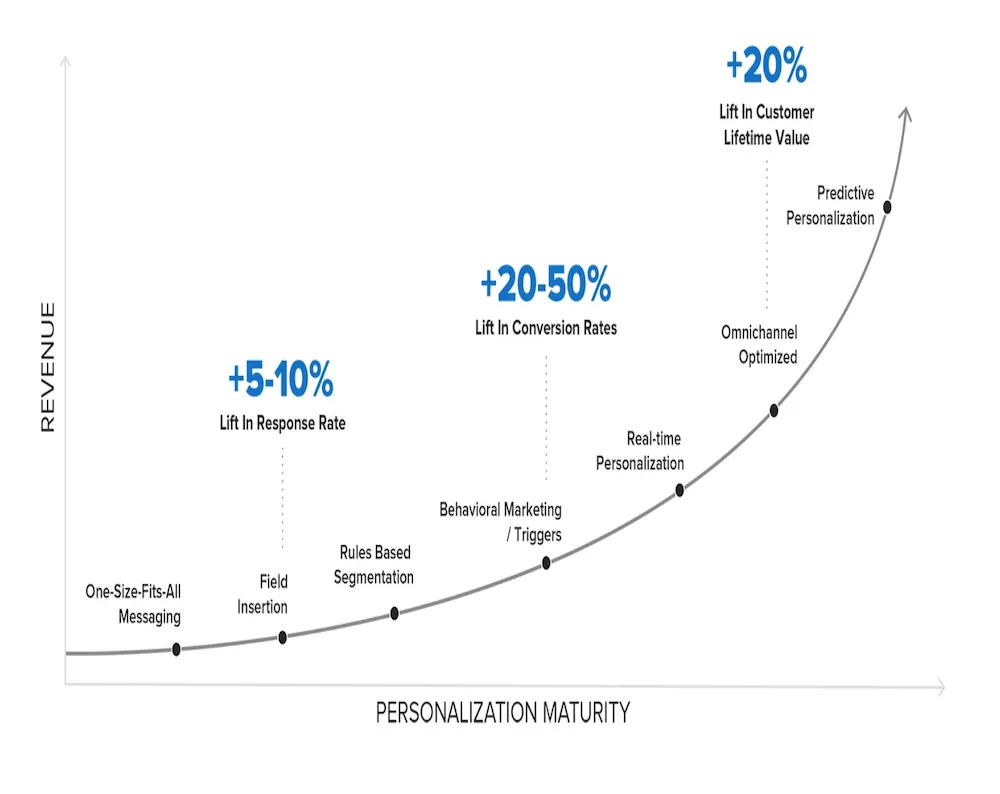Choosing email personalisation software. It Is an interesting observation that when searching Google the “Top 10 Shopify email apps” delivers the usual suspects: Omnisend, Klaviyo, GetResponse, Mailchimp, Vision6, Constant Contact, Tada and finally Privy.
Drilling down to our specifics then, with a search for the “top 10 personalisation apps” switches the results instead to “Customisation”. This infers that “personalisation” – the hottest ROI in ecommerce for the decades, has yet to achieve sufficient status within the search engines.
It might need sufficient peers to enable the search engines to avoid being accused of bias, should they offer a ranking at this stage. Heaven only knows what they’d do if employed to drill-down further to “top 10 personalised email software”, or deeper still to “Top 10 personalisation email software for Shopify”.
This forces email software houses to promote themselves. This is sufficient reason to tread carefully, reviewing from the point-of-view of first seeing who they think their peers are, and then weighing each yourself.
What is essential to do is to establish the distinction between personalisation and segmentation The difference in the return on investment (ROI) from each is a cavernous one, personalisation being 20x higher than the other, and important enough to emphasise that segmentation is not personalisation.
Let us then create a list of all email software offering segmentation:
Optinmonster https://optinmonster.com/features/list-segmentation/
Klaviyo https://help.klaviyo.com/hc/en-us/articles/115005237908-Guide-to-Creating-Segments
Getresponse https://www.getresponse.com/blog/segmenting-your-list
ShopSync/Mailchimp https://mailchimp.com/integrations/shopsync/
Shopify Email https://www.shopify.co.uk/partners/blog/email-segmentation
Vision6 https://www.vision6.com.au/crm-reporting/advanced-segmentation/
Constant Contact https://www.constantcontact.com/uk/features/list-segmentation
Privy https://help.privy.com/hc/en-us/articles/360046704233-Use-product-segmentation
Read another way, none of the above offer personalisation true personalisation.
If you are researching “personalisation to each individual consumer without segmenting” or more specifically “email personalisation software”,you drive at predictive personalisation software (PPS) of which the leading exponents are – SwiftERM. Yieldify, Listrak and BlueCore. Despite protestations otherwise the last 3 still segment, simply look for the word on their websites.
Research reveals how powerful predictive personalisation is in comparison to all other marketing initiatives.

PPS has an insurmountable lead, offering as must as 21x the ROI, CLV and AOV than it’s peers. But this is pure personalisation and “segmentation” is not personalisation.
Put any group of people in a room and tell them they are all identical. We would suggest they would all disagree, and you are asking for trouble. Imagine you let the same people wander down a wine alley in your local store. Segmenting companies suggest they will all go to exactly the same bottle, perhaps Casillero del Diablo according to The Drinks Business.
At this point you’re thinking “Pah! It’s not mine”, and at exactly this moment you see the “rub”. Nor is is it more than a handful percentage wise. Indeed while on the subject of wine, personalisation ranks as one of the greatest future opportunities to take advantage of.
Don’t wait for big data before personalising
Following in mega-retailers’ footsteps, leading UK grocer Tesco has been developing a big data strategy that sets it up for advanced modelling. This has prepared the company well to communicate and triangulate strategies, but other brands can still do a lot with less data.
A recent report from Dassault Systems finds that 83% of survey respondents said that they want product personalisation within minutes or hours after interacting with a brand. In order to do this, grocery retailers can tap into the real-time data that they’re starting to collect now, and not wait until they have a big database full of rich customer profiles.
Immediately available data such as search and shopping information can inform follow-up emails such as abandoned cart messaging. Weather data can help inform marketing content, such as warm meals for cold rainy locations. Loyalty card data can be used to show relevant savings, coupons and other offers. These data points can be used now to tremendous effect.
Advanced personalisation can sound daunting, according to McKinsey it drives differentiation in retail.
Starbucks used real-time data to send more than 400,000 variants of hyper-personalised messages, including food and beverage offers, to its users. Each offer is unique to the user’s preferences based on their past activity on the brand’s app. Imagine being able to amplify this is incorporate every SKU on your site, the effect would be huge.
The good news is that many grocery stores, wine shops and fashion outlets already employ elements of advanced personalisation at checkout, using loyalty cards as the identification element. But online grocery brands should think bigger. The massive benefit of instant identification of visitors to your site all shopping behaviour is digitised, brands get even more information about products that people browse but don’t buy, compare, or put back.
They can also incorporate insights around recipes that were viewed and calorie information. With so many more data elements to analyse, advanced personalisation can help evaluate and prioritise which behaviours matter most to generating ROI from personalised messaging, now and for the long term.




